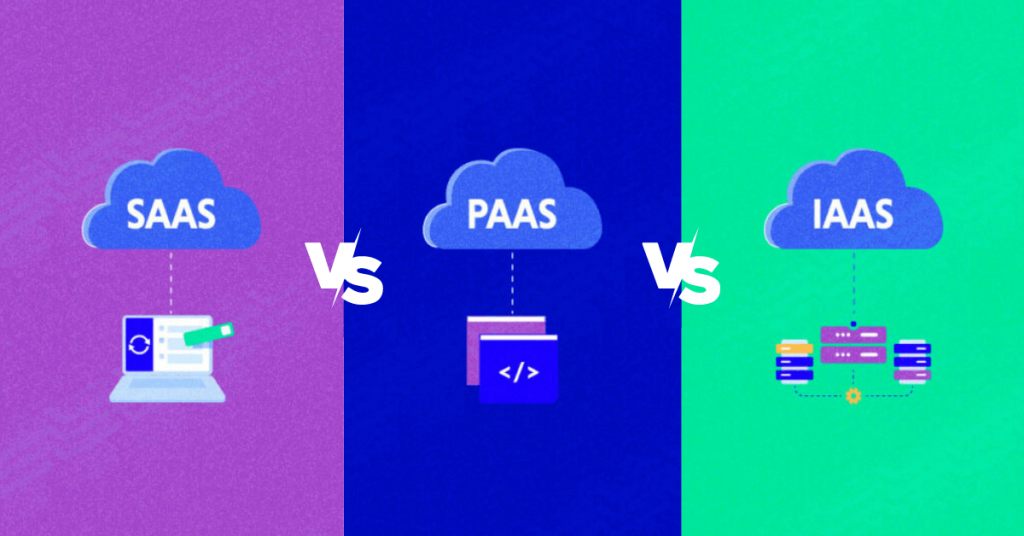Attention, SaaS founders! Are you ready to unlock the secrets of success for your software-as-a-service business? Look no further than the power of the software beta launch. In this blog post, we’ll delve into why beta launches are absolutely essential for SaaS success. Discover how these strategic launches can propel your company from good to great, captivate your target audience, and set the stage for long-term success. Get ready to embrace the art of beta and unleash the full potential of your SaaS venture!
What is a Software Beta Launch?
A software beta launch is an active process where a software company releases a pre-release version of their product to a select group of users for testing and feedback. During a beta launch, users have the opportunity to explore the software’s features, functionalities, and user experience before it is officially released to the public. By actively engaging with this group, the company can gather valuable insights, identify and fix any issues or bugs, and make necessary improvements based on user feedback.
This iterative approach allows the company to refine their product, ensure its stability, and align it with the needs and expectations of its target audience, ultimately leading to a more successful and user-centric final release.
Why is Software Beta Launch Important?
- User Feedback: Beta launches allow companies to collect valuable feedback from real users, enabling them to identify potential issues, understand user preferences, and make necessary improvements before the final release.
- Bug Detection and Fixing: By involving users in the testing process, beta launches help uncover bugs, glitches, and usability issues that may have been missed during internal testing. This early detection allows for prompt bug fixing and enhances the overall stability and reliability of the product.
- Enhanced User Experience: Beta testing provides an opportunity to gauge user reactions and preferences, enabling companies to refine the user interface, streamline workflows, and optimize the overall user experience. This leads to a more intuitive and user-friendly final product.
- Market Validation: A successful beta launch validates the product’s market potential and generates early adopter excitement. Positive feedback and testimonials from beta users can be used to build credibility, attract new customers, and differentiate the product from competitors.
- Early Customer Acquisition: Beta launches often allow participants early access to the product, giving them a sense of exclusivity and generating word-of-mouth marketing. This can lead to early customer acquisition, as beta users become potential advocates who spread the word about the product to their networks.
- Iterative Improvement: Beta launches support an iterative development process, where the product is continuously refined based on user feedback. This agile approach ensures that the final release is aligned with user expectations, resulting in higher customer satisfaction and reduced risk of product failure.
- Competitive Advantage: By leveraging beta launches effectively, companies can gain a competitive advantage by staying ahead of the curve.
Looking at the importance of beta launch, we get to know why the beta launch is important for SaaS success. Moving further let’s understand the process of beta launch to get succeed in this competitive market.

What is the Process of Beta Launch?
The process of a beta launch involves several key steps that ensure a smooth and effective testing phase before the final release. Let’s explore each point in detail:
Define Testing Goals:
Clearly outline the objectives of the beta testing phase. Identify specific metrics, features, or functionalities that need to be tested and evaluated. This helps provide a focus for the testing process and ensures that the right areas are prioritized.
Select a Target Audience:
Determine the ideal group of users who will participate in the beta testing. Consider factors such as demographic suitability, technical expertise, or representative user profiles. This ensures that feedback received reflects the perspectives of the intended user base.
Recruitment of Beta Testers:
Actively seek out potential beta testers through various channels, such as existing customer base, user communities, or social media platforms. Clearly communicate the expectations, benefits, and responsibilities of being a beta tester to attract engaged and committed participants.
Provide Clear Instructions:
Clearly communicate the purpose of the beta testing, the tasks to be performed, and any specific instructions or guidelines for feedback submission. This helps ensure that testers understand their role and provide meaningful insights.
Beta Release Deployment:
Distribute the beta version of the software to the selected testers. This can be done through a dedicated testing platform, a secure download link, or a cloud-based deployment method. Provide the necessary installation or access instructions to ensure a smooth setup process.
User Testing and Feedback Collection:
Encourage beta testers to actively explore the software, use its features, and provide feedback. This can be facilitated through surveys, feedback forms, or dedicated communication channels. Regularly engage with testers to address any questions or concerns they may have.
Bug Tracking and Issue Management:
Establish a system for testers to report bugs, issues, or other problems they encounter during testing. Use a bug tracking tool or a designated feedback platform to document, prioritize, and address these issues promptly. Regularly communicate updates and progress to testers.
Iterative Improvement and Release Updates:
Based on the feedback received, continuously iterate and improve the software. Regularly release updates or patches addressing reported bugs and incorporating suggested enhancements. This demonstrates responsiveness and keeps testers engaged throughout the beta phase.
Beta Testing Completion and Evaluation:
Once the testing goals have been met and the software has undergone significant improvements, conclude the beta testing phase. Evaluate the feedback received, assess the overall impact on the product, and determine if any further refinements are needed before the final release.
By following these steps, companies can effectively navigate the process of a beta launch, gather valuable insights, and ensure a successful transition from beta to the full-fledged release of their software product.
Things You Need To Review Before Beta Launch:
Before embarking on a beta launch, here are some key things you need to review:
- Functionality: Ensure that all essential features and functionalities of the software are working as intended and free from critical bugs or errors.
- User Interface: Review the user interface to ensure it is intuitive, visually appealing, and provides a seamless user experience.
- Compatibility: Check the compatibility of the software across different devices, operating systems, and browsers to ensure optimal performance.
- Performance: Assess the performance of the software, including its speed, responsiveness, and stability, to identify and address any performance bottlenecks.
- Security: Conduct a thorough security review to identify and fix any vulnerabilities that could compromise user data or the integrity of the system.
- Usability: Evaluate the overall usability of the software, considering factors such as ease of navigation, clarity of instructions, and accessibility for different user groups.
- Documentation: Review the documentation, including user guides, FAQs, and help resources, to ensure they are comprehensive, accurate, and easily understandable.
- Feedback Mechanisms: Set up robust feedback mechanisms, such as feedback forms or dedicated communication channels, to facilitate smooth and effective communication with beta users.
- Test Data: Prepare a comprehensive set of test data or scenarios that can be used by beta users to thoroughly explore the software’s capabilities and identify potential issues.
- Release Plan: Develop a well-defined release plan that outlines the timeline, milestones, and objectives of the beta launch, ensuring all stakeholders are aligned and aware of the plan.
By reviewing these aspects meticulously before the beta launch, you can set a solid foundation for a successful testing phase and gather valuable insights to improve your software.
When Is Beta Testing Done?
Beta testing is conducted after alpha testing and is typically done when the software is deemed stable and functional enough to be tested by a wider group of users. It serves as a critical phase where real users actively engage with the product, provide valuable feedback, and help uncover any remaining issues before the final release.
By involving a diverse range of users, beta testing ensures that the software is thoroughly tested in real-world scenarios, allowing for further refinements and enhancements to deliver a superior product experience. So, once alpha testing is completed, it’s time to shift gears and embark on the exciting journey of beta testing to fine-tune your software with the help of your target audience.
Beta Launch vs Alpha Launch
Here’s a comparison of Beta Launch vs Alpha Launch in a table format:
| Beta Launch | Alpha Launch |
|---|---|
| Involves a wider group of external users. | Primarily involves internal or limited group of users. |
| Focuses on gathering user feedback and conducting real-world testing. | Focuses on identifying major issues, bugs, and functionality errors. |
| Software is considered stable and closer to the final release. | Software may still be in an experimental or early development stage. |
| Aimed at refining the product based on user feedback and suggestions. | Aimed at uncovering major flaws and making significant improvements. |
| Generally follows the completion of alpha testing. | Generally precedes the beta testing phase. |
| Requires a more robust and comprehensive test environment. | May involve testing in controlled or specific environments. |
| Emphasizes usability, user experience, and compatibility testing. | Emphasizes functionality, performance, and basic feature testing. |
| May include limited marketing activities to generate excitement and awareness. | Typically does not involve marketing efforts as it focuses on internal testing. |
| Signifies a crucial step towards the final product release. | Represents an early stage of the development process. |
Best Beta Testing Sites:
When it comes to beta testing sites, one of the top contenders is BufferApps. Engaging and user-friendly, BufferApps provides an excellent platform for SaaS founders to conduct beta testing and gather valuable user feedback. Its intuitive interface and robust features make it a popular choice among SaaS companies seeking to streamline their beta testing process and ensure a successful product launch.
It allows you to seamlessly invite participants, gather insightful feedback, and track the progress of your beta program. Registering the product for the beta launch ensures that it actively reaches the right person, maximizing its potential impact and effectiveness. This helps you gain exposure, more eyeballs, real user feedback, early adopters and customers for your SaaS product. So, why settle for anything less when you can harness the power of BufferApps for your beta testing needs?
What is the advantage of using beta testing prior to the release of a new product?
Using beta testing prior to the release of a new product offers several advantages:
- Gathers valuable user feedback: Beta testing allows you to collect insights and suggestions from real users, helping you identify and address issues, improve features, and enhance the overall user experience.
- Identifies and fixes bugs: Engaging a wider group of users during beta testing helps uncover bugs, glitches, and usability issues that the internal testing team may have missed. This enables you to address them promptly, ensuring a more stable and reliable product.
- Validates market acceptance: Beta testing provides an opportunity to gauge market acceptance and validate the product’s appeal. Positive feedback and testimonials from beta users can build credibility and create excitement, increasing the chances of a successful product launch.
- Enhances product quality: Beta testing allows for iterative improvement based on user feedback, resulting in a more refined and polished final product. By involving users in the testing process, you can align the product with their needs, preferences, and expectations, leading to higher customer satisfaction.
- Reduces product risks: Through beta testing, you can mitigate risks associated with a new product launch. By identifying and addressing issues beforehand, you can minimize the chances of negative user experiences, customer dissatisfaction, and potential damage to your brand reputation.
Overall, Beta testing empowers you to optimize your product based on real-world feedback. It ensures that your product meets user expectations and stands a better chance of success in the market.
Conclusion – Software Beta Launch
The power of a software beta launch cannot be underestimated in achieving SaaS success. By actively involving users in the testing process, gathering valuable feedback, and refining the product based on their needs, SaaS companies can unlock the potential for greatness. Beta launches offer a strategic opportunity to fine-tune features, optimize user experience, and ensure a stable and reliable final release.
Embracing the art of beta empowers SaaS founders to stay ahead of the competition, delight users, and build a solid foundation for long-term success. So, don’t underestimate the impact of a well-executed beta launch—it could be the game-changer your SaaS venture needs.
FAQs –
A software beta launch contributes to SaaS success by enabling companies to identify and fix issues, optimize features based on user feedback, validate market acceptance, and enhance overall product quality. It helps meet user expectations and increases the likelihood of a successful product launch.
Conducting a software beta launch offers numerous benefits for SaaS companies. It allows them to gather valuable user feedback, detect and fix bugs, refine the user experience, validate the market potential, reduce risks, and ultimately deliver a superior product that meets user needs and drives SaaS success.
In software development, the beta release phase involves actively making a pre-release version of the software available to a select group of users for testing and feedback.
To run a beta launch, you can invite a select group of users to test the software, provide them with access to the beta version, gather their feedback, and iterate on the product based on their insights.
Yes, software beta launches are often free for participants. Companies invite users to test the software without charging them to gather valuable feedback and improve the product before its official release.
The duration of a beta launch can vary. It typically lasts for a few weeks to a few months, depending on the complexity of the software and the goals of the testing phase.

